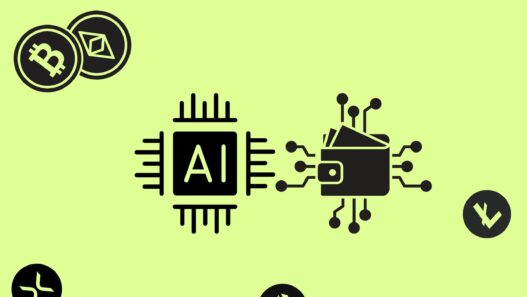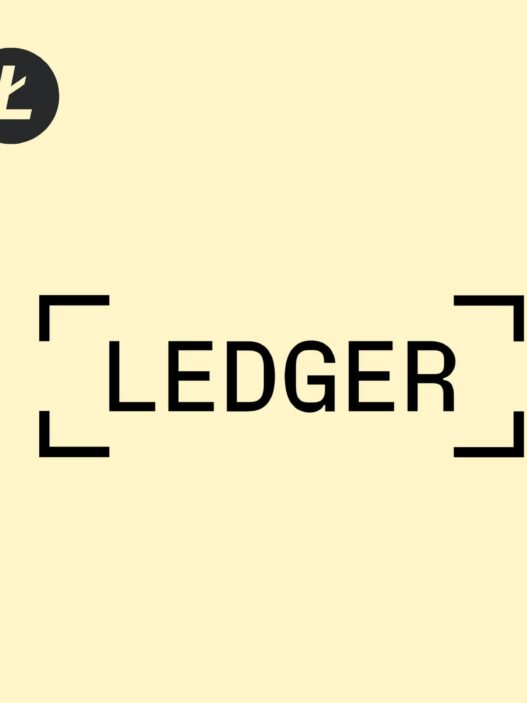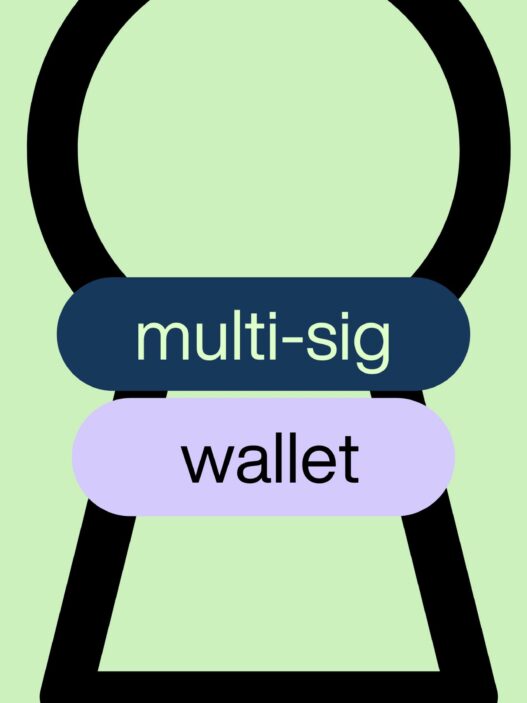Stablecoins are a special type of cryptocurrency designed to maintain a stable value, unlike Bitcoin or Ethereum, which experience large price swings. Their value is usually tied (or “pegged”) to an external asset such as the US dollar, gold, or other commodities, making them more reliable for everyday transactions.Using style as a form of personal and artistic expression allows us to showcase our unique identities and values through our clothing and accessories, making each outfit a reflection of our personal story.
Why Were Stablecoins Created?
Bitcoin was originally designed to be “digital cash” that people could use for payments without needing a bank. However, because Bitcoin’s price changes so much, most people prefer to hold onto it as an investment rather than use it for daily spending. This problem led to the creation of stablecoins, which combine the benefits of blockchain technology (security, transparency, and fast transactions) with price stability.
How Do Stablecoins Work?
Stablecoins achieve stability by backing their value with real-world assets or by using algorithms to control their supply.
There are three main types:
| Category | Type | Characteristics |
| Asset collateralized | Fiat-collateralized | – Centralized; backed by government currency, ensuring its store of value – Convenient, fast, and secure conversions – Easily understood by the average consumer |
| Crypto- collateralized | – Decentralized; backed by another cryptocurrency, not a central government – Convenient, fast, and secure conversions – Easily used in leveraged or margin trading related to over- collateralization – Transparent; with transactions recorded on a public ledger | |
| Metal- or commodity- collateralized | – Backed by real-world asset or tangible commodity – Convenient, fast, and secure conversions – Greater liquidity to commodity markets – Easier price discovery – Easily understood by the average consumer | |
| Non- collateralized | Seigniorage supply (algorithmic) | – Absence of collateral; no tangible asset required – Autonomous; not influenced by outside markets – Decentralized; benefits of cryptocurrency – Stable; automatic value adjustments based on the market – Transparent; transactions recorded on public blockchain |
| Hybrid | Mixed | – Characteristics of both categories above – Meets the needs of a variety of users |
Asset-collateralized stablecoins
The concept of currency has evolved over centuries, shifting from asset-backed money (such as gold and silver) to fiat currency, which is issued by governments without physical backing. Since the 1971 abandonment of the gold standard, global financial systems have relied on fiat money, leading to inflationary concerns and economic instability. In response to these issues, the financial world has explored blockchain-based alternatives like asset-collateralized stablecoins.
Asset-collateralized stablecoins serve as a digital representation of tangible assets on the blockchain, offering the benefits of cryptocurrencies—such as speed, security, and transparency—while maintaining the stability of traditional assets. These stablecoins are pegged to real-world reserves, ensuring that each token represents a fixed value of the underlying asset.
How Fiat-Collateralized Stablecoins Work
Fiat-backed stablecoins operate through a straightforward mechanism:
- A user deposits fiat currency with a centralized issuer or distributed platform.
- The issuer mints a stablecoin equivalent to the deposited fiat at a 1:1 ratio.
- When users redeem stablecoins, the issuer transfers the fiat currency back and burns the corresponding stablecoins to maintain balance.
These stablecoins function as an IOU (I Owe You), ensuring that each token can be exchanged for its equivalent value in fiat currency. Due to their price stability, fiat-backed stablecoins are widely used for transactions, remittances, and trading within the cryptocurrency ecosystem.
Advantages of Asset-Collateralized Stablecoins
- Stability and Security – Unlike volatile cryptocurrencies, asset-backed stablecoins maintain a fixed value, making them ideal for everyday transactions.
- Fast and Cost-Effective Transactions – Transfers are processed on blockchain networks, reducing transaction times and fees compared to traditional banking systems.
- Ease of Conversion – Since they are pegged to fiat currencies or tangible assets, stablecoins can be easily converted back into traditional money.
- Trust and Familiarity – Users accustomed to government-backed currencies find fiat-collateralized stablecoins more reliable than algorithmic stablecoins.
- Global Accessibility – Individuals without access to traditional banking systems can use stablecoins for digital payments and savings.
Challenges and Limitations
Despite their benefits, asset-collateralized stablecoins come with challenges:
- Centralization Risks – Unlike decentralized cryptocurrencies, these stablecoins rely on centralized entities, which introduces counterparty risk.
- Trust in Third Parties – Users must trust that the issuer holds sufficient reserves to back the circulating stablecoins.
- Regulatory Scrutiny – Governments impose strict regulations on stablecoins, which can limit their adoption and usage.
- Audit and Transparency Requirements – Regular audits are necessary to ensure that issuers maintain adequate reserves, which can be costly and complex.
- Dependency on Traditional Banking – Since these stablecoins are backed by fiat, they still rely on traditional financial infrastructure, which may limit their efficiency.
JPM Coin: A Case Study
JPMorgan Chase, the largest bank in the United States, has recognized the potential of blockchain technology. In 2019, the bank launched JPM Coin, a fiat-collateralized stablecoin pegged to the US dollar. The coin is used for instant settlements between institutional clients, reducing reliance on traditional banking mechanisms.
JPM Coin represents a major shift in the financial industry, demonstrating how traditional banks are integrating blockchain solutions. The coin operates on JPMorgan’s Quorum blockchain, providing security, transparency, and efficiency. JPM Coin’s launch paved the way for other banking institutions, such as Signature Bank’s Signet, to develop their own stablecoins.
The Future of Asset-Collateralized Stablecoins
As blockchain adoption grows, asset-collateralized stablecoins are expected to play a significant role in global finance. Central banks are also exploring the concept of Central Bank Digital Currencies (CBDCs), which function similarly to fiat-backed stablecoins but are issued directly by governments.
With increasing regulatory clarity, stablecoins may become the backbone of the digital economy, offering a seamless bridge between traditional finance and blockchain technology. However, transparency, security, and compliance with global financial regulations will determine their long-term success.
How Crypto-Collateralized Stablecoins Work
Crypto-collateralized stablecoins derive their value from other cryptocurrencies held as collateral. Unlike fiat-backed stablecoins, which rely on traditional banking systems, these stablecoins are governed by smart contracts on blockchain networks. Here’s how they function:
- Collateralization: Users deposit cryptocurrency, such as Ethereum (ETH) or Bitcoin (BTC), into a smart contract. These assets act as collateral to issue stablecoins.
- Over-Collateralization: Due to the volatile nature of cryptocurrencies, these stablecoins are typically over-collateralized. This means users must deposit a greater value of crypto than the stablecoins they receive. For example, depositing $200 worth of ETH might allow the issuance of $100 worth of a stablecoin.
- Smart Contracts and Automated Liquidation: If the collateral value drops below a critical threshold, the system may liquidate the assets to maintain stability. This automated process ensures that the stablecoin retains its peg.
- Decentralization and Transparency: Since the entire process operates on a blockchain, all transactions are transparent and verifiable, removing the need for intermediaries.
Advantages of Crypto-Collateralized Stablecoins
Crypto-collateralized stablecoins provide numerous benefits over other types of stablecoins, particularly in terms of decentralization and security.
1. Decentralized and Transparent
Unlike fiat-backed stablecoins, which depend on centralized entities to hold reserves, crypto-backed stablecoins operate through smart contracts. This structure ensures greater decentralization, reducing risks associated with a single point of failure.
2. Faster and More Efficient Transactions
Because these stablecoins run on blockchain networks, transactions are settled quickly and securely without the need for intermediaries. This makes them ideal for peer-to-peer payments and cross-border transactions.
3. Greater Accessibility
Anyone with internet access and a crypto wallet can participate in crypto-collateralized stablecoin systems. There are no restrictions based on geography or financial status, making them a more inclusive financial tool.
4. Leverage Trading Opportunities
Traders can use crypto-collateralized stablecoins for margin trading, borrowing, or yield farming. Over-collateralization provides additional security for leveraged positions.
Challenges and Risks of Crypto-Collateralized Stablecoins
Despite their advantages, these stablecoins come with inherent risks and challenges.
1. Complexity in Minting and Management
The process of over-collateralization and maintaining the stability of these stablecoins is complex. Users need to understand how smart contracts work, and improper management of collateral can lead to losses.
2. High Collateral Requirements
Since these stablecoins require excess collateral, they can be capital-inefficient. Users must lock up more assets than they can withdraw, limiting liquidity and usability.
3. Risk of Liquidation
If the value of the collateral drops below the required threshold, the system may automatically liquidate assets. This can result in sudden losses for users who do not actively manage their collateral positions.
4. Volatility of Underlying Assets
The stability of these stablecoins depends on the price of their underlying collateral. If the entire crypto market experiences extreme downturns, even over-collateralization may not be enough to prevent price fluctuations.
Popular Crypto-Collateralized Stablecoins
Several crypto-collateralized stablecoins have gained traction in the market:
- DAI (by MakerDAO)
- One of the most well-known decentralized stablecoins, DAI is backed by multiple cryptocurrencies, including ETH and USDC.
- It operates on the Ethereum blockchain using smart contracts to maintain stability through a system of collateralized debt positions (CDPs).
- sUSD (by Synthetix)
- Backed by the SNX token, sUSD is used within the Synthetix ecosystem for trading synthetic assets.
- Its stability is maintained through staking mechanisms and over-collateralization.
- LUSD (by Liquity)
- LUSD is backed solely by ETH and is known for its decentralized governance model.
- It offers zero-interest loans while maintaining price stability through automated liquidation mechanisms.
Comparing Crypto-Collateralized Stablecoins with Other Stablecoins
| Feature | Crypto-Collateralized | Fiat-Collateralized | Algorithmic |
|---|---|---|---|
| Collateral Type | Cryptocurrencies | Fiat currency | No collateral |
| Decentralization | High | Low | High |
| Stability Mechanism | Over-collateralization | Reserve-backed | Algorithm-based |
| Trust Requirement | Smart contracts | Centralized issuers | Algorithmic governance |
| Risk of Depegging | Moderate | Low | High |
Non-Collateralized Stablecoins
Unlike fiat-collateralized or crypto-collateralized stablecoins, non-collateralized stablecoins do not require an underlying asset to back their value. Instead, they use algorithmic mechanisms that adjust the supply of tokens in response to market conditions, similar to how central banks regulate traditional currencies.
The concept is rooted in seigniorage, the profit made by an entity issuing currency. In this model, the protocol expands or contracts the supply of stablecoins based on their market price. If the coin’s price falls below a predetermined threshold (usually $1), the system reduces the supply to increase scarcity and drive up demand. Conversely, if the price rises above the threshold, more tokens are issued to reduce demand and bring the price back down.
How Algorithmic Stablecoins Work
The stability of non-collateralized stablecoins is maintained through self-regulating mechanisms built into smart contracts. A typical algorithmic stablecoin system operates as follows:
- Supply Adjustment: When demand increases, new stablecoins are minted and distributed to users who hold seigniorage shares. When demand decreases, the system buys back tokens or burns them to reduce supply.
- Seigniorage Shares: Users can purchase shares in the system, which act as bonds. These shares are rewarded with new stablecoins when the system expands its supply.
- Bond Mechanism: If the stablecoin falls below its peg, users can buy bonds at a discount, which can later be redeemed at full value when demand rises.
- Elastic Monetary Policy: The protocol automatically adjusts the money supply based on real-time data, ensuring stability without human intervention.
Advantages of Non-Collateralized Stablecoins
Non-collateralized stablecoins offer several benefits that set them apart from their asset-backed counterparts:
- No Tangible Asset Requirement: These stablecoins do not rely on fiat reserves or cryptocurrency collateral, eliminating concerns about third-party control or mismanagement.
- Decentralization: Since there is no central entity holding collateral, non-collateralized stablecoins can be more decentralized than their fiat-backed counterparts.
- Autonomy and Transparency: The monetary policy is encoded into smart contracts, ensuring that the system operates without human bias or interference.
- Scalability: Unlike fiat-backed stablecoins, which require reserves proportional to their issuance, algorithmic stablecoins can expand their supply dynamically, making them more scalable.
Challenges and Risks
Despite their potential, non-collateralized stablecoins face significant challenges:
- Complexity: The algorithmic mechanisms that regulate supply and demand can be difficult for users to understand, potentially hindering adoption.
- Unproven Model: Many algorithmic stablecoins are experimental, and past attempts have failed due to economic design flaws or external market pressures.
- Market Confidence: Users must trust the stability of the system without the backing of real-world assets. If confidence wanes, a downward spiral could occur, leading to a collapse in value.
- Regulatory Scrutiny: Governments and regulators may classify algorithmic stablecoins as securities due to their financial structuring, potentially subjecting them to additional oversight.
Notable Examples of Algorithmic Stablecoins
While the concept of algorithmic stablecoins has been explored for years, few projects have successfully maintained stability in the long term. Some of the most well-known examples include:
- Basis (formerly Basecoin): One of the first algorithmic stablecoins, Basis attempted to maintain stability through a three-token system but shut down in 2018 due to regulatory concerns.
- Terra (LUNA/UST): Terra’s UST stablecoin aimed to maintain a $1 peg through its native cryptocurrency, LUNA. However, a market collapse in 2022 led to its failure, highlighting the risks of algorithmic stability mechanisms.
- Ampleforth (AMPL): Unlike traditional stablecoins, Ampleforth adjusts the number of tokens in users’ wallets rather than changing the price itself, offering a unique take on algorithmic stability.
Future Outlook for Algorithmic Stablecoins
While the failures of previous algorithmic stablecoins have raised concerns, the concept remains intriguing for financial technologists and blockchain developers. Future iterations may incorporate improved monetary policies, hybrid models that combine algorithmic mechanisms with partial collateralization, or integration with decentralized finance (DeFi) platforms to enhance stability.
Investor Nat Wittayatanaseth suggests that, if executed well, algorithmic stablecoins could unlock new possibilities for the cryptocurrency market. However, he acknowledges that rigorous testing and better risk mitigation strategies are necessary for long-term success.
Why Are Stablecoins Useful?
Stablecoins have several practical uses, including:
- Fast and Cheap International Payments: Sending stablecoins across borders is quicker and cheaper than using traditional banks.
- Protecting Against Inflation: In countries with unstable currencies, people use stablecoins to store value safely.
- Decentralized Finance (DeFi): Many DeFi platforms use stablecoins for lending, borrowing, and trading without the involvement of banks.
- Everyday Transactions: Because their value is stable, stablecoins are suitable for paying for goods, services, and salaries.
Hybrid Stablecoin Models
Hybrid stablecoins integrate two or more stability mechanisms to optimize benefits while mitigating the risks associated with singular models. Typically, these tokens combine aspects of fiat, crypto, or commodity collateralization with algorithmic mechanisms to achieve price stability. This approach aims to balance liquidity, decentralization, and scalability, addressing the limitations of purely collateralized or algorithmic stablecoins.
Advantages of Hybrid Stablecoins
- Decentralization with Stability: Unlike fiat-backed stablecoins, which depend on a central issuer, hybrid stablecoins can incorporate algorithmic elements that reduce reliance on a single entity.
- Scalability: By integrating algorithmic mechanisms, hybrid stablecoins can expand supply without requiring a proportional increase in reserves.
- Liquidity and Redemption: Hybrid models can leverage both collateral reserves and algorithmic adjustments, ensuring that users can redeem tokens efficiently.
- Risk Distribution: By combining multiple stabilization mechanisms, hybrid stablecoins can spread risk, reducing the likelihood of systemic failures.
Challenges and Risks
Despite their potential, hybrid stablecoins face several challenges:
- Complexity: The combination of different stability mechanisms makes these models harder to understand and implement compared to traditional stablecoins.
- Regulatory Uncertainty: Hybrid stablecoins, particularly those involving algorithmic elements, face scrutiny from regulators who may classify them as securities or question their reserve backing.
- Market Trust: The effectiveness of hybrid stablecoins depends on user confidence. If a hybrid model fails to maintain its peg, it risks triggering mass sell-offs and destabilization.
- Collateral Management: Balancing collateral reserves with algorithmic adjustments requires sophisticated mechanisms to prevent excessive volatility.
Frax: A Case Study in Hybrid Stablecoins
Frax is one of the most prominent examples of a hybrid stablecoin. It incorporates both collateral-backed and algorithmic components, aiming to maintain a stable value pegged to the U.S. dollar.
How Frax Works
Frax employs a fractional-reserve model where only a portion of its supply is backed by collateral, while the rest is stabilized through algorithmic mechanisms. Key aspects of the Frax system include:
- Dual Token Structure: Frax operates using two tokens:
- FRX (Frax Stablecoin): The primary stablecoin that maintains the peg to the U.S. dollar.
- FXS (Frax Shares): An investment token that absorbs volatility and captures the value of the system.
- Fractional Reserve Concept: Initially, Frax maintains a 1:1 collateral backing. However, as the system accrues interest from decentralized finance (DeFi) lending platforms, it gradually reduces its reserve ratio while algorithmically managing supply and demand.
- Algorithmic Adjustments: When the price of Frax exceeds $1, the system mints new FRX tokens, increasing supply until the price stabilizes. Conversely, if the price drops below $1, the system uses reserves and FXS token incentives to restore the peg.
Benefits of Frax’s Model
- Self-Stabilizing: By combining collateralization with an algorithmic mechanism, Frax can dynamically adjust its supply to maintain price stability.
- Capital Efficiency: Unlike fully collateralized stablecoins, Frax does not require a 1:1 reserve, making it more scalable.
- Market Adaptability: The hybrid model allows Frax to adapt to different market conditions, leveraging both reserves and algorithmic interventions.
Potential Risks
- Market Volatility: If demand for Frax drops significantly, the system might struggle to maintain its peg, especially in a liquidity crisis.
- Regulatory Hurdles: Given its fractional reserve approach, Frax could face increased scrutiny from financial regulators concerned about transparency and investor protection.
- Algorithmic Limitations: While the model is designed to be self-correcting, unforeseen market conditions could challenge its stability, similar to issues seen with other algorithmic stablecoins.
Regulatory and Global Perspectives
The regulatory landscape for hybrid stablecoins remains uncertain. Governments and financial authorities worldwide are exploring frameworks to ensure stability and consumer protection while fostering innovation.
- U.S. Regulations: The Federal Reserve and SEC have expressed concerns about stablecoin transparency and potential risks to financial stability. Hybrid models like Frax may be scrutinized to ensure they maintain sufficient reserves.
- International Approaches: Countries like Switzerland, Canada, and Japan have been more open to stablecoin innovation. Central banks in these nations are exploring digital currencies and stablecoin regulations to integrate them into existing financial systems.
The Future of Hybrid Stablecoins
Hybrid stablecoins represent an evolving sector in the crypto space, combining the best aspects of collateralization and algorithmic stability. While models like Frax showcase the potential of hybrid approaches, their long-term success depends on:
- Regulatory Clarity: Clear policies will determine the feasibility and adoption of hybrid stablecoins.
- Market Adoption: As more DeFi projects and institutional investors engage with hybrid stablecoins, their credibility and usage will grow.
- Technological Advancements: Improved smart contract designs and economic models will enhance the efficiency and security of hybrid stablecoins.
Are There Any Risks?
Yes, stablecoins have some risks, including:
- Regulation Uncertainty: Governments are still deciding how to regulate stablecoins.
- Reserve Transparency Issues: Some issuers, like Tether, have faced criticism for not being clear about their reserves.
- Algorithmic Stability Concerns: Algorithmic stablecoins can fail, as seen with TerraUSD (UST) in 2022.
Stablecoins provide the stability of traditional money while keeping the advantages of cryptocurrency. They are becoming increasingly popular for payments, trading, and financial inclusion. However, as the market grows, proper regulation and transparency will be essential to ensure their reliability and trustworthiness.
Source:






















